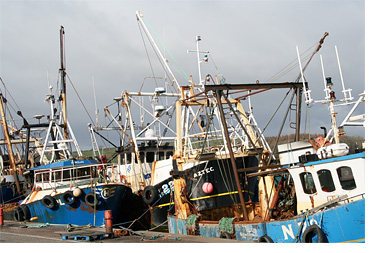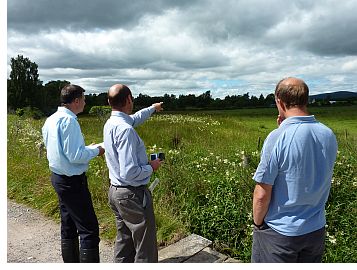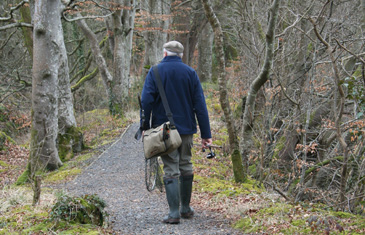News
SPIRAL "UK National Ecosystem Assessment" paper publshed
A new paper has been published based on work carried for SPIRAL, authored by Kerry Waylen and Juliette Young. This paper focuses on the first phase of the UK National Ecosystem Assessment.
Upcoming Event
No upcoming events.
WP 1: Interface Stocktaking | Full description
 SPIRAL is first going to gain insight into how biodiversity research is connected to policy making processes in order to identify additional actions needed and good practices for the development of science-policy interfaces. This will be achieved by taking stock of experience with biodiversity science-policy interfaces at various levels and in various contexts and by exploring the factors facilitating or hindering their effectiveness.
SPIRAL is first going to gain insight into how biodiversity research is connected to policy making processes in order to identify additional actions needed and good practices for the development of science-policy interfaces. This will be achieved by taking stock of experience with biodiversity science-policy interfaces at various levels and in various contexts and by exploring the factors facilitating or hindering their effectiveness.
Map the landscape of existing science-policy interfaces on biodiversity and develop a categorisation of institutional types
Science-policy interfaces for biodiversity issues exist at all levels, in very different contexts and have a variety of purposes, functions and forms. The interface processes range from informal to very formal, from snapshot to permanent, from personal communication to institutionalised representation, from science-dominated to policy-dominated, and so on. They may involve facilitating, synthesising or translating intermediary (boundary) organisations and objects. They can be more or less interactive and range from restricted dialogues between experts and policy-makers to participatory processes allowing broad involvement of stakeholders. Examples include: face to face communication between a scientist and a policy maker; scientific advisory bodies and councils; interfaces with research policy; international or regional assessment processes; strategic initiatives; subsidiary bodies of scientific expertise to biodiversity-related conventions, interfaces of specific projects or networks.
 To get an overview of the different approaches to science-policy interfaces, we will start our work with a study to map the landscape – mainly on the European scale, but also, as a complementary insight, at international and national levels. The study will provide a catalogue of science-policy interfaces on biodiversity categorised according to a series of criteria. Criteria will be identified during the study, based on existing literature on science-policy interfaces. These will include for instance purpose, function, form, formality (as illustrated in the above list); biodiversity-related issues on which the science-policy interface focuses; participation, communication, resources, dynamics and inputs
To get an overview of the different approaches to science-policy interfaces, we will start our work with a study to map the landscape – mainly on the European scale, but also, as a complementary insight, at international and national levels. The study will provide a catalogue of science-policy interfaces on biodiversity categorised according to a series of criteria. Criteria will be identified during the study, based on existing literature on science-policy interfaces. These will include for instance purpose, function, form, formality (as illustrated in the above list); biodiversity-related issues on which the science-policy interface focuses; participation, communication, resources, dynamics and inputs
The objective of the task is to learn from as many different and contrasting experiences as possible, including experiences in newer Member States, resulting in the development of a map and categorization of science-policy interfaces for biodiversity. This task will consist of information gathering from various sources including: existing case studies on science-policy interfaces in the literature (including the grey literature); questionnaires; semi-structured interviews with key actors and analysts; and on observation and knowledge of existing processes by members of the consortium.
Analyse some specific case studies of science-policy interfaces, in particular with regard to their impact, shortcomings and strengths
Following the mapping of to the current landscape of biodiversity science-policy interfaces, we will investigate a selection of science-policy interfaces in detail in order to get further insights into what aspects of their structure, process and context lead to positive impacts on the policy process. We will use common information-gathering methods (questionnaires, semi-structured interviews and direct observation) to investigate good practice in relation to, amongst others:
- Range of stakeholder involvement (e.g. scientists, NGOs, business) and their roles;
- Information flows in and out of the science-policy interface e.g. respectively preparatory synthesis work and outputs; including level of transparency and types of knowledge taken into consideration;
- Degree of consideration of uncertainty and complexity in the process;
- Expected and perceived impact on policy processes
 These criteria will be further refined and complemented, but they will aim at producing a qualitative analysis of what factors enabled or hindered effective science-policy dialogue and the reasons for that.
These criteria will be further refined and complemented, but they will aim at producing a qualitative analysis of what factors enabled or hindered effective science-policy dialogue and the reasons for that.
The main aim of the case studies is to identify the strengths and weaknesses of different practices in relation to their actual and/or perceived impact on policy processes, including stakeholder involvement and feedback into the formulation of research strategies, the organisation of research and the policy process itself. The work will not comprise a critical external evaluation of individual biodiversity science-policy interfaces, rather a collaborative assessment of the practices of existing interfaces with those institutions and persons engaged in them. This approach will also help identify the needs of various actors and the institutional gaps. The lessons learned will directly feed into the development of recommendations and we expect that engagement with biodiversity science-policy interfaces will, of itself, increase interaction between them and promote their development. The case studies will focus on two areas of science-policy interfaces:
- Biodiversity science-policy interfaces at the national level: supporting biodiversity strategies and action plans
- European research projects (FP5 & FP6), their dissemination strategy and their science-policy interface concepts
A workshop will be organised bringing together coordinators and/or partners in charge of science-policy interfaces in FP6 and FP7 projects from within and outside the SPIRAL consortium and representatives from DG RTD and DG ENV to present the preliminary results of the analysis and enrich it through interactive discussion and brain-storming among the key players.
Synthesise hindering and enabling factors to the effective integration of biodiversity research results into policy-making
A synthesis report on lessons learnt, hindering and enabling factors for effective biodiversity science-policy interfaces will be produced. Draft syntheses will be produced along the way to ensure real-time feed-back for later work. The overall results will be published in a peer-reviewed journal.
One particular issue which will be covered in the report will be how the different approaches to interfacing science with policy tackle issues of complexity and uncertainty as regards both knowledge and (policy) action. The hypothesis behind this focus is that in many cases, uncertainty and complexity may constitute potent hindering factors to take biodiversity into account in concrete policy actions.




